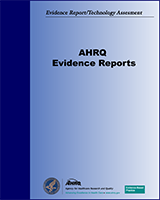From: Evidence Tables

NCBI Bookshelf. A service of the National Library of Medicine, National Institutes of Health.
| Author | Year | Validity Score | # CFS patients | % CFS patients employed | # Healthy controls | % Healthy controls employed | Significant differences: CFS vs. healthy controls | No significant differences: CFS vs. healthy controls |
|---|---|---|---|---|---|---|---|---|
| Buchwald | 1996 | 7 | 185 | 46 | 99 | 91 | MOS SF-36 - mental health: 57 vs. 83 (p<.001) | |
| Claypoole | 2001 | 5 | 22 | 52 | 22 | 86 | Hopkins verbal learning: 26.1 vs. 27.4 | |
| Garcia-Borrequero | 1998 | 5 | 42 | 27* | 41 | 100 | POMS - confusion: 12.0 vs. 5.9 (p<.0001) POMS - depression: 9.2 vs. 5.4 (p<.05) | POMS - tension/anxiety (scores not reported) POMS - anger/hostility (scores not reported) |
| Lloyd | 1994 | 5 | 12 | 42 | 13 | 100 | POMS - confusion: 14.8 vs. 2.4 (p<.1) POMS - depression: 21.5 vs. 0.6 (p<.001) | |
| Michiels | 1996 | 5 | 35 | 26 | 33 | 100 | WAIS digit span forward: 45.3 vs. 52.6 (p<.0005) | |
| Natelson | 1995 | 6 | 41 | 18** | 6 | 100 | POMS - depression/dejection: 10 vs. 3 POMS - confusion: 14 vs. 2 | |
| Ray | 1993 | 5 | 24 | 13*** | 24 | 71*** | EAQ: 35.6 vs. 49.3 (p<.001) PFRS - emotional distress: 3.5 vs. 1.2 (p<.001) PFRS - cognitive difficulty: 3.8 vs. 1.0 (p<.001) | |
| Schmaling | 1998 | 4 | 15 | 13 | 11 | 91 | SCL 90-R - depression: 59.3 vs. 25.8 (p<.001) MOS SF-36 - mental health: 69.1 vs. 85.5 (p<.001) | |
| Vercoulen | 1997 | 7 | 51 | 49 | 53 | 89 | SIP - concentration: 35.0 vs. 2.2 (p=.0001) CIS - concentration: 5.2 vs. 1.9 (p=.0001) |
Measures of dispersion are not included in this table. p values are listed when reported.
MOS SF-36 = Medical Outcomes Study Short-Form General Health Survey
POMS = Profile of Mood States
EAQ = Everyday Attention Questionnaire
PFRS = Profile of Fatigue-Related Symptoms
SCL 90-R = Symptom Checklist 90 - Revised
SIP = Sickness Impact Profile
CIS = Checklist Individual Strength
* This study reported the number of patients with vocational disability. It was assumed that the remainder of patients were employed.
For controls, vocational disability was reported as N/A, and 100% employment was assumed.
** This study reported the number of patients disabled, and it was assumed that the remainder of patients were employed.
*** This study reported only the number of patients employed full-time.
From: Evidence Tables

NCBI Bookshelf. A service of the National Library of Medicine, National Institutes of Health.